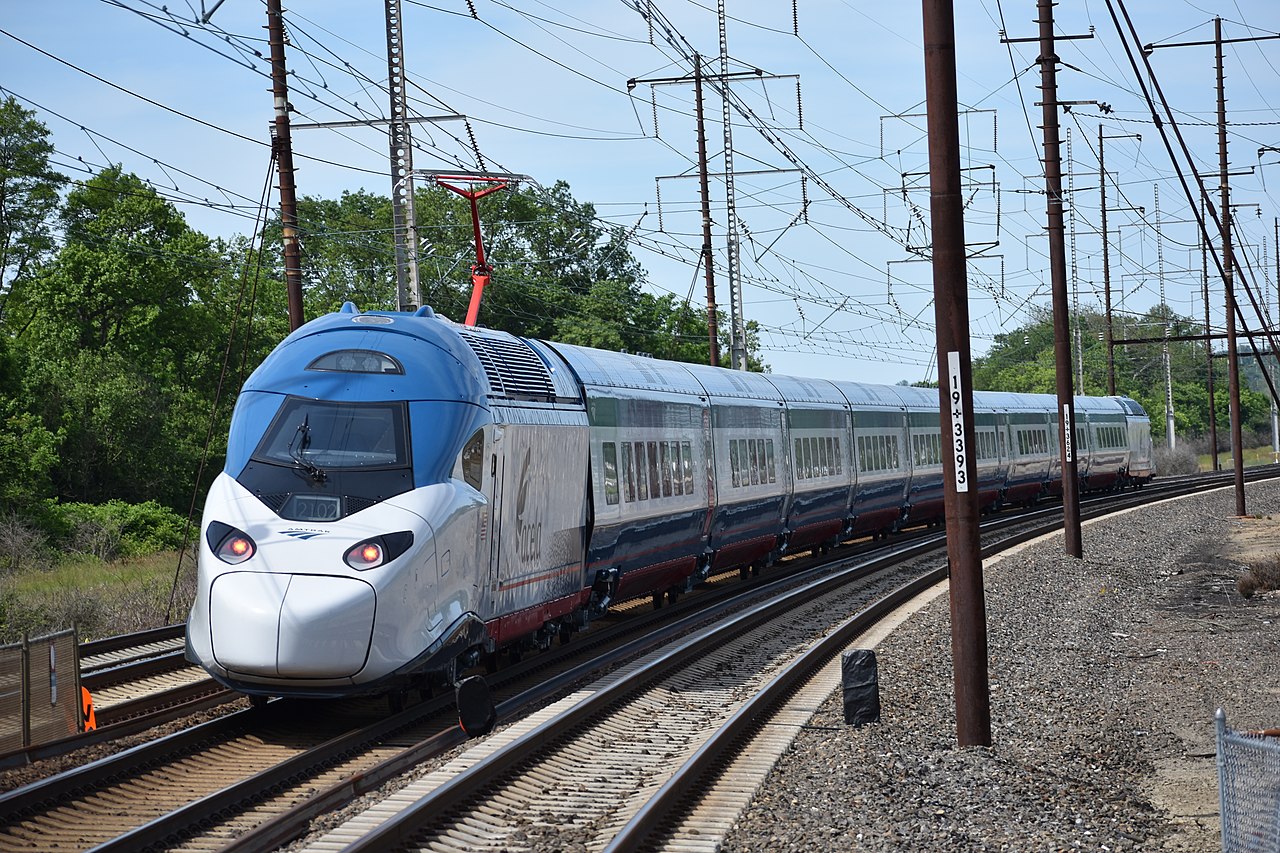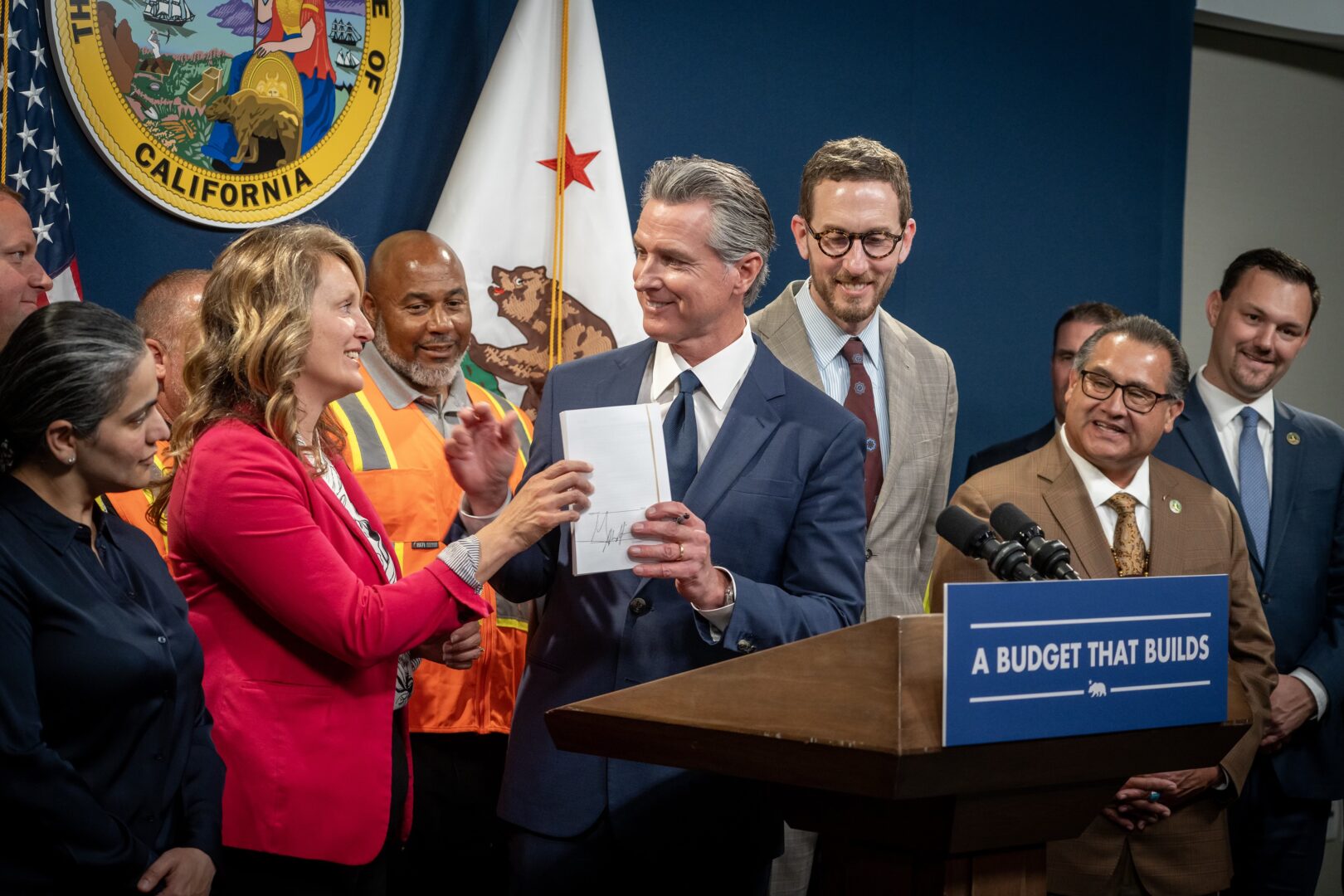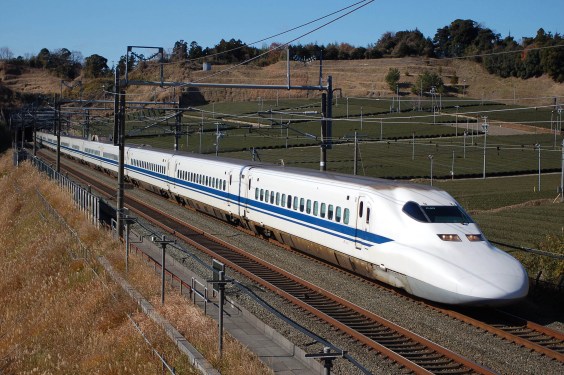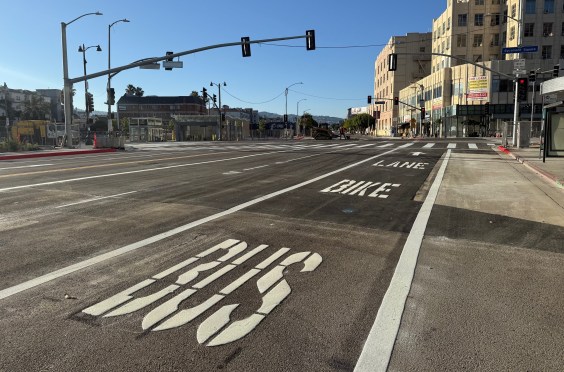Time spent on a train is so much more productive than flying that even airlines executives prefer riding the rails apparently. This was an unintentional revelation from a Reuters report by Dave Shepardson about how New York-based JetBlue Airlines has offered $3.6 billion to acquire Spirit.
Boris Lipkin, Northern California Regional Director at the California High-Speed Rail Authority, shared this Tweet from Shepardson:
The lesson here is not about the leak but that the CEO of an airline that flies that route was taking the train because it’s better/faster. That just about says it all. #BuildHSR #BetterThanFlying https://t.co/VvpXJtTZPZ
— Boris Lipkin (@Blipkin) April 6, 2022
Streetsblog has reached out to JetBlue Airlines--which offers 15 daily flights and codeshares each way between Boston and New York--for comment on why its chief was riding Amtrak instead of flying and will update this post. However, a bit of Googling around suggests the 53-year-old Hayes just prefers trains when they're fast and available.
Nor is it really surprising. Why would anyone want to waste time taxiing, getting to and from airports, etc., when they can relax and be productive on a train that will take them directly from city center to city center?
That's why Amtrak carries more riders than all airlines combined on its busy, moderately high-speed corridor between Boston and New York. "Travelers choose rail--even airline executives--because it's faster, cheaper, more direct, and a million times less hassle than flying or driving," said Andy Kunz, CEO of the U.S. High Speed Rail Association.
The Northeast Corridor between Boston, New York and Washington DC was first completed in 1917. Today, the electrified rail system carries some 260 million passengers every year. Acela, the premier train on the route, is the closest the U.S. has to high-speed rail--it achieves 150 mph for a brief stretch through New England. But because of aged infrastructure and a lack of real investment compared to highways and airports, the average speed is only 84. Compare that to real high-speed rail services in Asia and Europe, such as the French TGV, which averages around 170 mph on scheduled runs.
If airline execs--plus millions of others--see the advantages of Amtrak's moderately fast Northeast Corridor service, imagine what will happen when true high-speed rail, of the European and Asian variety, comes to California, joining all its major cities. That, of course, is the plan for California's currently under-construction high-speed rail project.
It's also why petroleum companies use front groups to try and kill high-speed rail. The Los Angeles Times had a great piece Sunday documenting how petroleum groups fund bogus university research as part of a disinformation campaign to keep the country addicted to oil. From the piece:
Despite the wealth of evidence showing that oil and gas drilling is responsible for most of the world’s destructive warming, the fossil fuel industry is ferociously fighting to keep its business model alive. It is lobbying against science-backed climate policy that would reduce the use of oil and gas; spreading misinformation, including climate science denial; and launching marketing campaigns — greenwashing — to suggest its business is based on sustainability even though it isn’t meaningfully reducing planet-warming emissions.
The irony is the L.A. Times itself regularly quotes oil-funded university professors to disparage rail. And of course petroleum companies fund politicians on both sides of the aisle, who continue to block voter-approved funding to electrify the Central Valley spine of California's HSR project--the next stage of its construction. Some of these politicians, such as Anthony Rendon and Laura Friedman, have specifically and repeatedly targeted electrification of the line.
The reasoning behind the petroleum industry effort is as simple as it is cynical: if California succeeds in creating its own, modern, much-faster "Northeast Corridor" between the Bay Area, the Central Valley, and Southern California, it's going to take a huge bite out of their profits. Most people, including airline executives, are going to stop flying on short hops. California will follow the same pattern one sees in every other country where high-speed rail was constructed; airlines will rapidly lose customers. There will also be far fewer miles driven.
Oil companies would much rather keep California beholden to their product, so they can charge airlines, drivers, and even taxpayers who prefer to use transit and bicycles, the highest possible prices at the pump.






